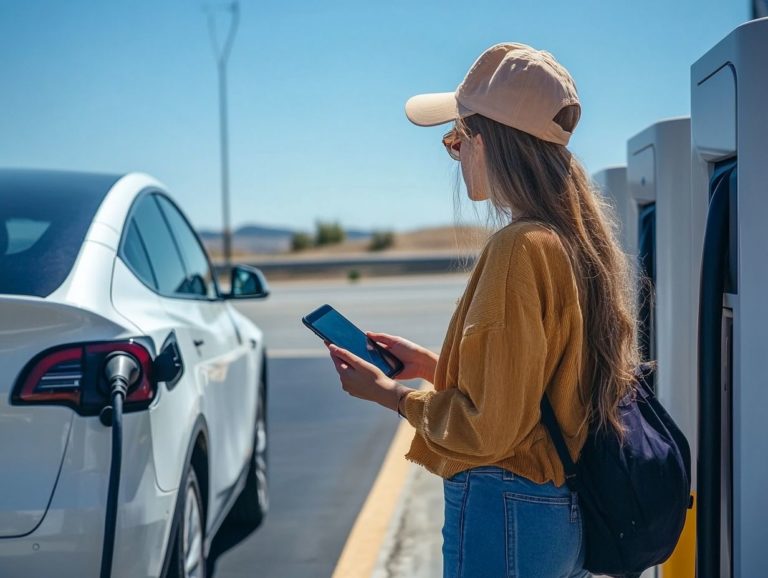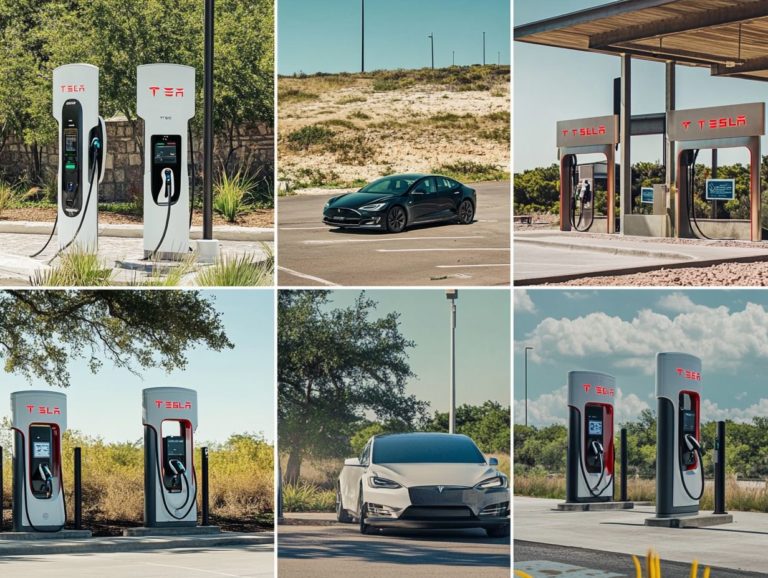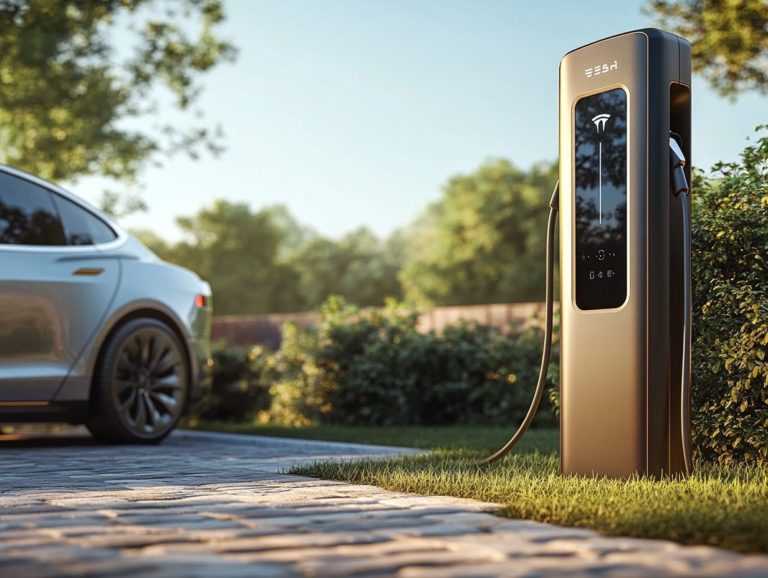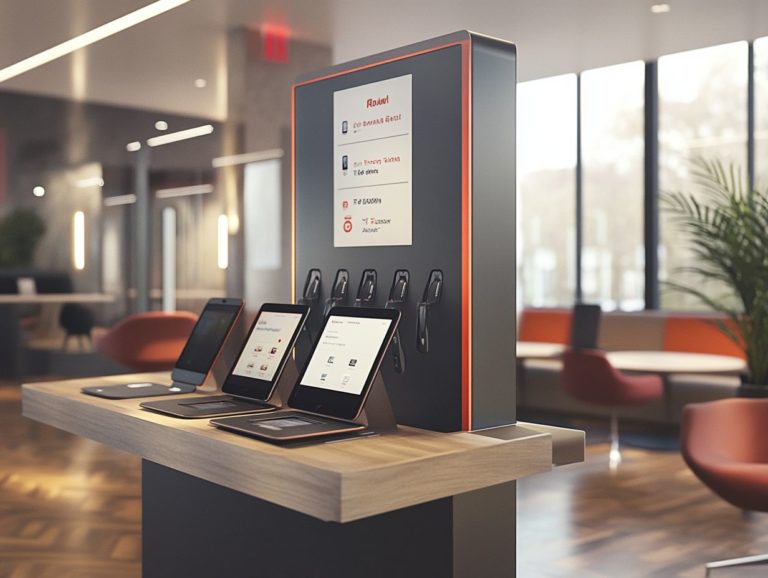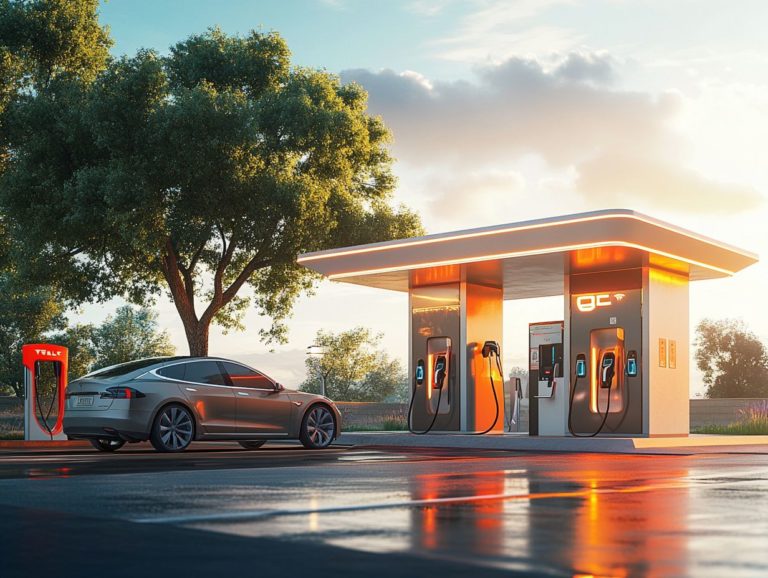How to Keep Your EV Charger Maintained
As electric vehicles (EVs) gain traction, it becomes crucial for you to grasp how to maintain your EV charger effectively. This ensures optimal performance and durability.
This article delves into what an EV charger is and underscores the significance of regular maintenance. It also offers a comprehensive guide to common upkeep tasks you should perform.
From cleaning and inspecting to troubleshooting issues, you ll find a methodical approach to keeping your charger in peak condition. You ll also discover insights to extend its lifespan and elevate your overall charging experience.
Explore these strategies to ensure your EV charger continues to serve you well for years ahead!
Contents
- Key Takeaways:
- The Importance of Maintaining Your EV Charger
- Common Maintenance Tasks for EV Chargers
- How to Properly Maintain Your EV Charger
- Troubleshooting Common Issues
- Tips for Extending the Lifespan of Your EV Charger
- Frequently Asked Questions
- How often should I clean my EV charger?
- What is the best way to clean my EV charger?
- Is it necessary to have my EV charger inspected?
- How can I protect my EV charger from weather damage?
- What should I do if my EV charger is not working?
- Are there any maintenance tips to prolong the lifespan of my EV charger?
Key Takeaways:
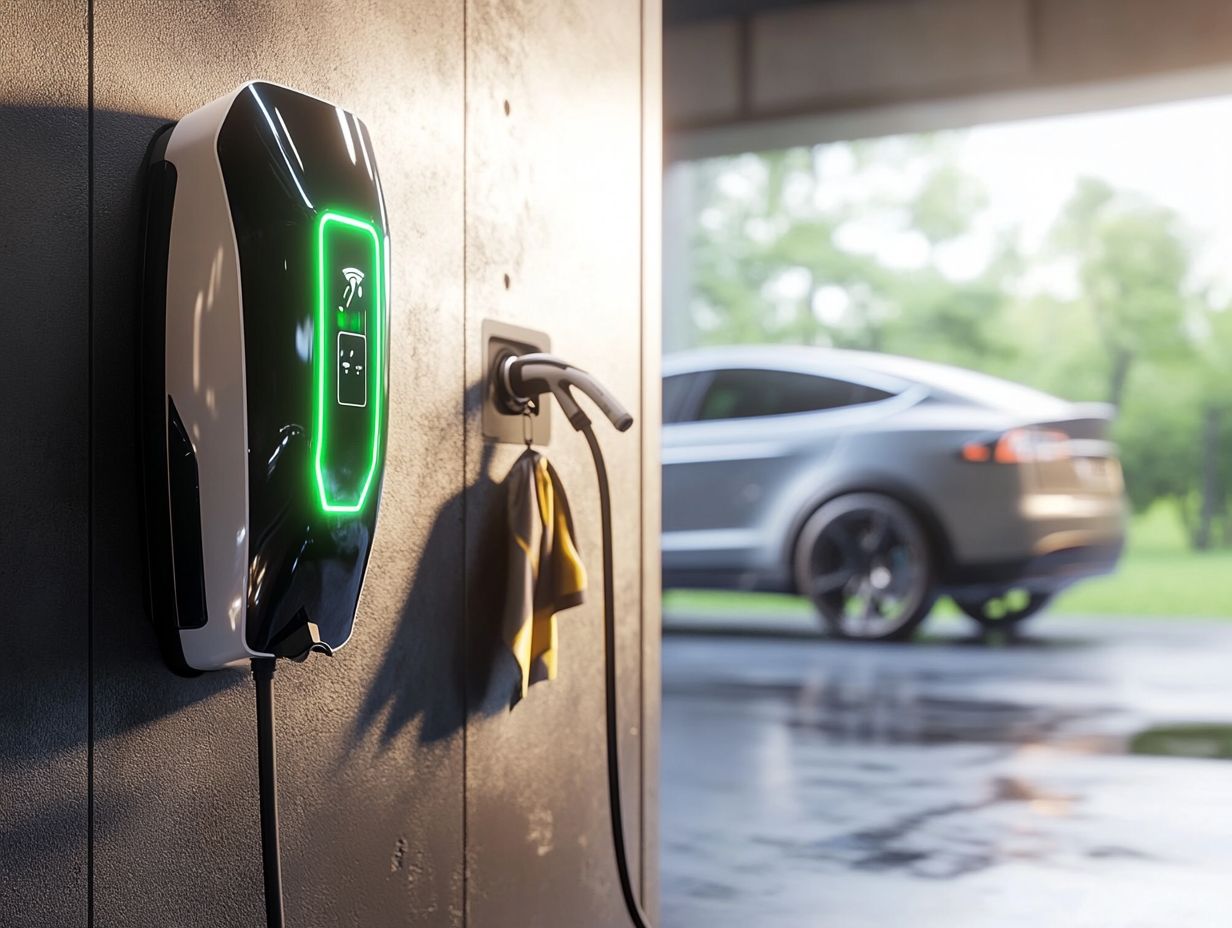
- Don t wait! Regular maintenance is key to keeping your EV charger running smoothly.
- Simple tasks like cleaning and inspecting the charger can prevent potential issues and save you money in the long run.
- Following a step-by-step guide and troubleshooting common issues helps you maintain your EV charger and extend its lifespan.
What is an EV Charger?
An EV charger is essential for recharging your electric vehicle (EV). Various chargers exist, from home units to public stations, each designed for different EV models.
Understanding the purpose and functionality of an EV charger is essential for optimizing your electric mobility experience and maximizing battery efficiency.
Alongside Level 1 chargers, often found in residential settings and providing a slower charge, Level 2 chargers offer much quicker energy replenishment. These are commonly available at public charging stations.
For long-distance journeys, ultra-fast DC fast chargers can dramatically reduce your charging time, making travel easier for EV owners. These charging infrastructures help minimize energy consumption by maximizing battery efficiency and play a crucial role in the broader adoption of electric vehicles.
Smart charging solutions can elevate how you manage your energy use. You can monitor consumption and schedule charging during off-peak hours, ensuring you get the best value.
The Importance of Maintaining Your EV Charger
Maintaining your EV charger is crucial for ensuring optimal performance and longevity. Regular upkeep allows you to spot issues before they become significant problems. To learn more about this process, check out how to schedule regular EV maintenance. This helps ensure your charging connections remain secure and your charger operates at peak efficiency.
Consistent inspections and safety checks are essential for preventing potential hazards, such as wiring issues or electrical damage. This enables you to fully enjoy the advantages of your charging infrastructure.
Benefits of Regular Maintenance
Regularly maintaining your EV charger brings a wealth of benefits that significantly enhance its efficiency and performance. To learn more about the best practices, refer to this guide on how to maximize your EV charging experience. This ultimately extends its lifespan and keeps your warranty intact.
By proactively troubleshooting and addressing issues promptly, you can sidestep costly replacements and ensure your electric vehicle runs without a hitch. Setting up a maintenance schedule not only upholds your warranty but also bolsters the reliability of your charging solutions.
Think of regular check-ups as your safety net; these can dramatically reduce unexpected breakdowns and the costs that come with them. When you keep your charger in peak condition, you ll notice improved performance. Optimal charging speeds and energy efficiency translate to quicker vehicle recharge times.
Safety is another compelling advantage. Routine inspections can uncover potential hazards like faulty wiring or overheating, ensuring a secure charging environment. In essence, consistent maintenance maximizes the effectiveness of your EV charger and cultivates a smooth, worry-free ownership experience.
Common Maintenance Tasks for EV Chargers
Common maintenance tasks for your EV chargers involve essential activities to ensure optimal and safe performance. Regular cleaning, thorough inspections, and careful damage assessments are crucial, along with understanding the maintenance needs of EVs.
These practices enhance the efficiency of your charger and mitigate risks associated with corrosion and cable wear. By prioritizing proper cable management and routine damage checks, you can significantly extend the lifespan of your EV charger while ensuring safe operation.
Cleaning and Inspecting the Charger
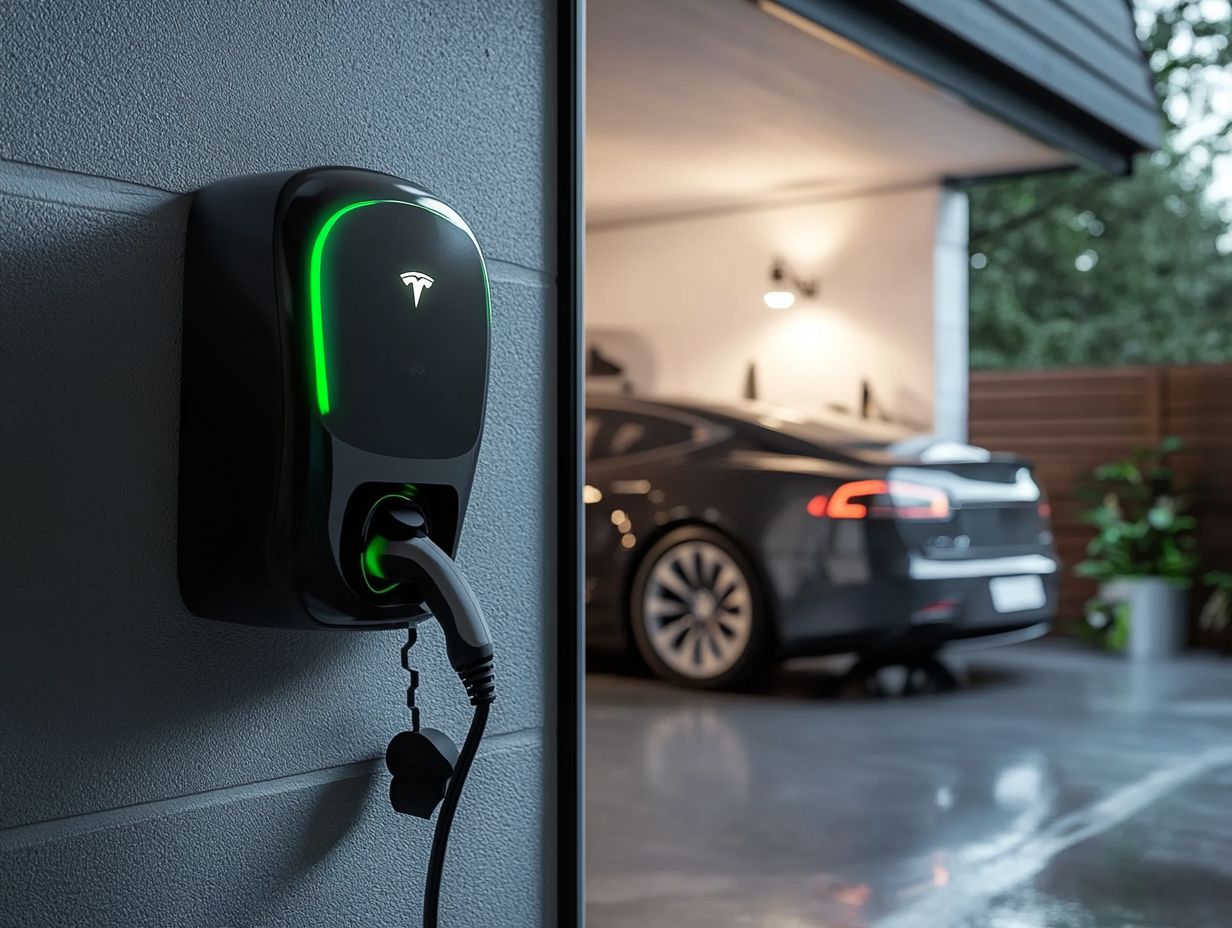
Cleaning and inspecting your EV charger is a crucial maintenance task to guarantee its longevity and optimal performance. Regular cleaning eliminates dust and debris that can accumulate on the charger and its cables, and it’s also important to know how to maintain your EV’s exterior finish for overall care.
Thorough inspections help find problems like rust or wear before they escalate into costly repairs. By prioritizing these tasks, you create a safe and efficient charging environment for your electric vehicle.
Incorporating these practices into your routine enhances safety and supports the overall health of your electric vehicle. During inspections, be vigilant for common contaminants such as dirt, moisture, and insect nests, which can hinder proper functionality.
Ensuring connections are secure and cables are undamaged is key to maintaining an uninterrupted charging process. For cleaning, use a soft cloth and non-abrasive cleanser to remove grime from the charger s surface.
Paying close attention to these details extends the lifespan of your charger and boosts charging efficiency. This ultimately enriches your electric vehicle experience.
Checking and Replacing Parts
Regularly checking and replacing parts of your EV charger is essential for maintaining its functionality and safety. Over time, components like cables, connectors, and the charging port can wear down due to exposure or frequent use.
Timely replacements prevent downtime and ensure efficient charging. By keeping a vigilant eye on these crucial components, you can address potential issues before they escalate.
Your routine inspections should include examining the insulation on cables for cracks or fraying. Ensure the connectors are free from debris and corrosion.
If you notice slow charging times or intermittent connections, these could be clear signs that a part needs replacing. Don t overlook the importance of checking for overheating; if any component feels excessively hot, it may signal an underlying issue that needs your immediate attention.
Regular maintenance keeps your EV charger running smoothly and saves you money on repairs. Additionally, knowing how to maintain your electric vehicle’s tires can enhance your overall experience and performance. Let’s make your charging experience seamless!
How to Properly Maintain Your EV Charger
Maintaining your EV charger effectively requires a well-structured maintenance schedule. This schedule should encompass both routine tasks and timely software updates, along with tips on how to optimize charging for your EV, to ensure your charger operates at peak efficiency.
Utilizing energy monitoring systems enhances your experience by tracking usage and identifying potential issues. These systems help you track how much energy your charger uses.
It s crucial to refer to the user manual for tailored maintenance practices. This will help you uphold the charger s performance and extend its longevity.
Start your maintenance routine today to enjoy uninterrupted charging tomorrow!
Step-by-Step Guide for Maintenance
This comprehensive guide for maintaining your EV charger presents the essential steps to ensure both optimal efficiency and safety. By following these procedures, including regular safety checks, software updates that improve performance, and prompt attention to performance issues, you can extend the lifespan of your charger while ensuring it operates smoothly. Additionally, it’s important to know how to maintain your EV’s climate control for overall vehicle health.
Start by conducting monthly safety checks to inspect for any visible wear or damage. This includes ensuring that your charging unit is free from obstructions or corrosion that could compromise its performance.
Next, aim for quarterly software updates. These updates often include critical enhancements that boost both operating efficiency and security, making them a vital part of your maintenance routine.
If you encounter any performance issues such as fluctuating charging rates or error messages act quickly. Addressing these concerns immediately can help you avoid larger and more costly repairs later.
By implementing these maintenance tasks, you not only make your charger work better but also improve your overall experience, providing peace of mind as you depend on your electric vehicle for daily travel.
Troubleshooting Common Issues
Troubleshooting common issues with your EV charger is essential for maintaining peak performance and ensuring the safety of both the charger and your electric vehicle. Problems like connection failures, sluggish charging speeds, or inconsistent performance often point to specific underlying issues that demand prompt diagnosis and resolution.
By conducting regular damage inspections and keeping your security patches up to date, you can significantly lower the chances of running into these frustrating complications.
Identifying and Resolving Problems
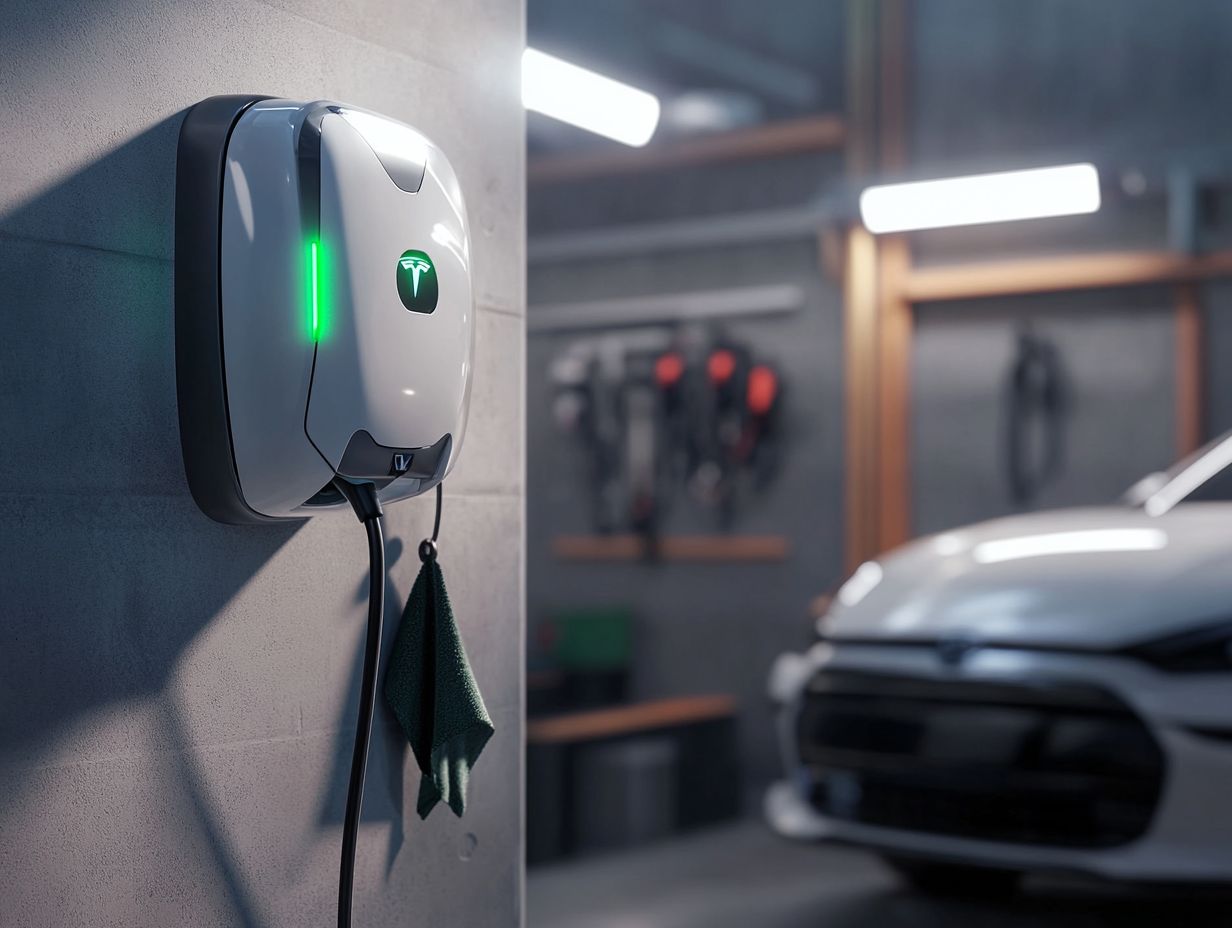
Identifying and resolving issues with your EV charger starts with recognizing symptoms like decreased charging speed or unexpected energy consumption. These factors can significantly impact your electric vehicle s overall performance. By proactively troubleshooting, you can swiftly address these problems, ensuring minimal downtime and maintaining a reliable charging experience.
Recognizing these symptoms is just the beginning; the next step involves employing effective diagnostic techniques. For instance, checking for loose connections or damaged cables can uncover underlying issues that may hinder performance.
Monitoring the charger’s status indicator lights can offer valuable insights into specific faults. Common troubleshooting practices include:
- Resetting the charger: This can often resolve minor issues and restore functionality.
- Ensuring proper voltage supply: Verify that the power source provides the required voltage.
- Consulting the manufacturer s guidelines for error codes: This can help you identify problems based on specific error messages.
By following these practical solutions, you not only enhance your understanding of potential mishaps but also optimize your EV charging system for a seamless experience.
Tips for Extending the Lifespan of Your EV Charger
Want to keep your EV charger working longer? Here’s how! You can extend its lifespan by implementing a series of best practices centered around maintenance, protection, and proper installation, including understanding EV regulations and maintenance.
Regardless of whether your charger is indoors or outdoors, ensuring it s weatherproof and safeguarded against the elements is crucial for its durability.
Regular cable repair and management will help prevent wear and tear, ultimately maximizing both the charger s lifespan and its efficiency.
Best Practices for Long-Term Maintenance
Implementing best practices for the long-term maintenance of your EV charger is essential for ensuring it meets your electrical needs efficiently and safely. This means scheduling automatic updates for the software and firmware, keeping your charger equipped with the latest security patches and performance enhancements. Regular assessments of your charger s condition are also vital, allowing you to identify potential issues before they escalate.
In addition to these measures, maintaining clear documentation of your maintenance activities is crucial. This practice not only helps you track problems and resolutions over time but also provides a detailed look at the charger s health. Make visual inspections a regular habit! Look for signs of wear and tear, such as frayed cables or loose connections, which could hinder optimal performance.
Utilizing manufacturer-recommended cleaning techniques will help prevent dust accumulation, which can significantly impact the efficiency of your charger. Adopting these strategies enhances the reliability of your EV charger and ensures it serves you well for years to come. Additionally, maintaining your EV’s cooling system is essential, so start your maintenance routine today to keep your EV charger in top shape!
Frequently Asked Questions
How often should I clean my EV charger?
It is recommended to clean your EV charger at least once a month to prevent dirt and debris buildup.
What is the best way to clean my EV charger?
You can clean your EV charger by wiping it down with a damp cloth and mild soap. Avoid using harsh chemicals or abrasive materials.
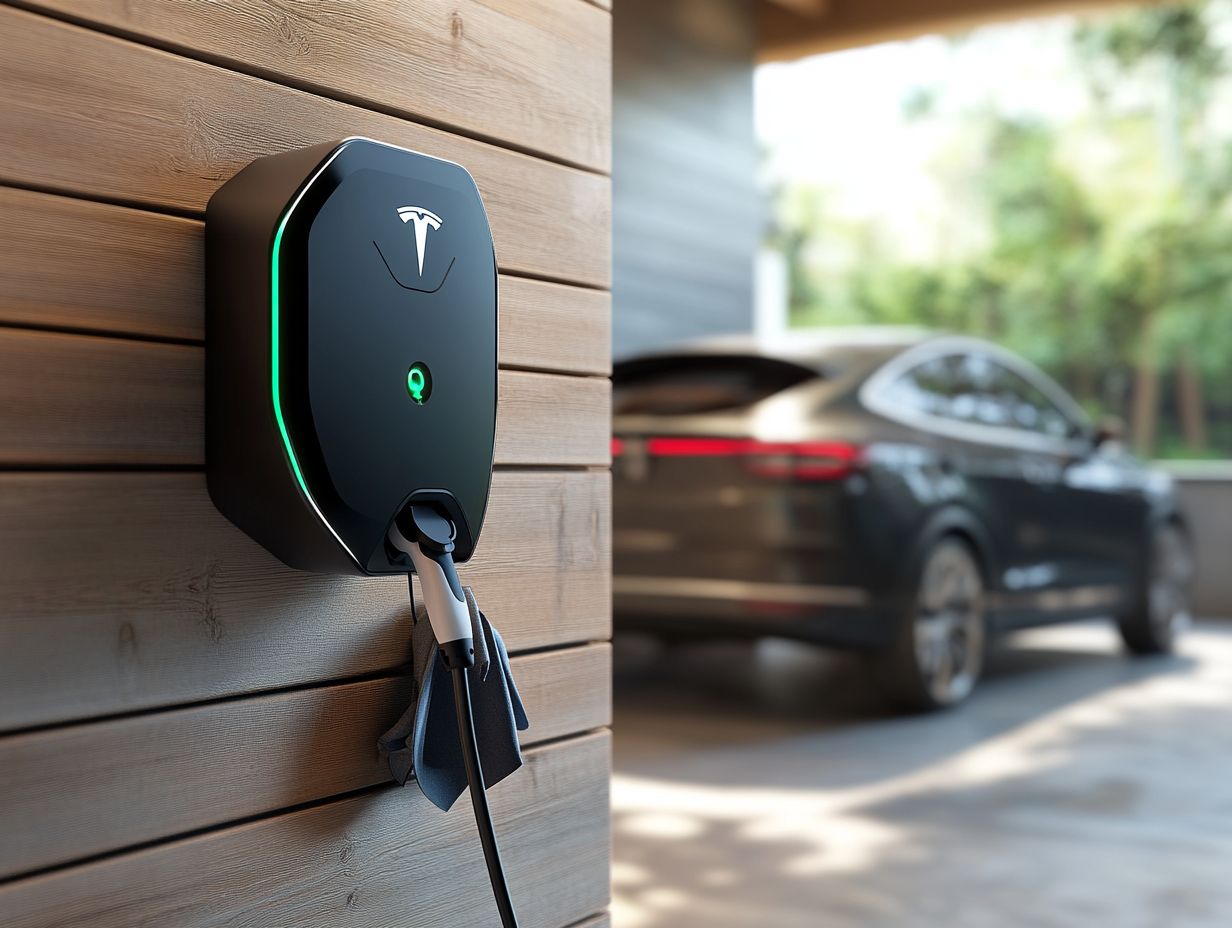
Is it necessary to have my EV charger inspected?
Yes, it is important to have your EV charger inspected at least once a year by a certified electrician to ensure it is functioning properly and safely.
How can I protect my EV charger from weather damage?
It is recommended to install your EV charger in a covered or sheltered area to protect it from rain, snow, and extreme temperatures. If that is not possible, consider purchasing a weatherproof cover.
What should I do if my EV charger is not working?
If your EV charger is not functioning properly, first check the power source and make sure it is connected. If it is still not working, contact a certified electrician for further assistance.
Are there any maintenance tips to prolong the lifespan of my EV charger?
Yes, you can prolong the lifespan of your EV charger by avoiding overcharging, keeping it clean, and having it regularly inspected and serviced by a certified electrician.
Summary of Key Maintenance Tips:
- Clean your charger monthly.
- Inspect it visually for wear and tear.
- Schedule yearly inspections by a certified electrician.
- Protect it from the weather.

